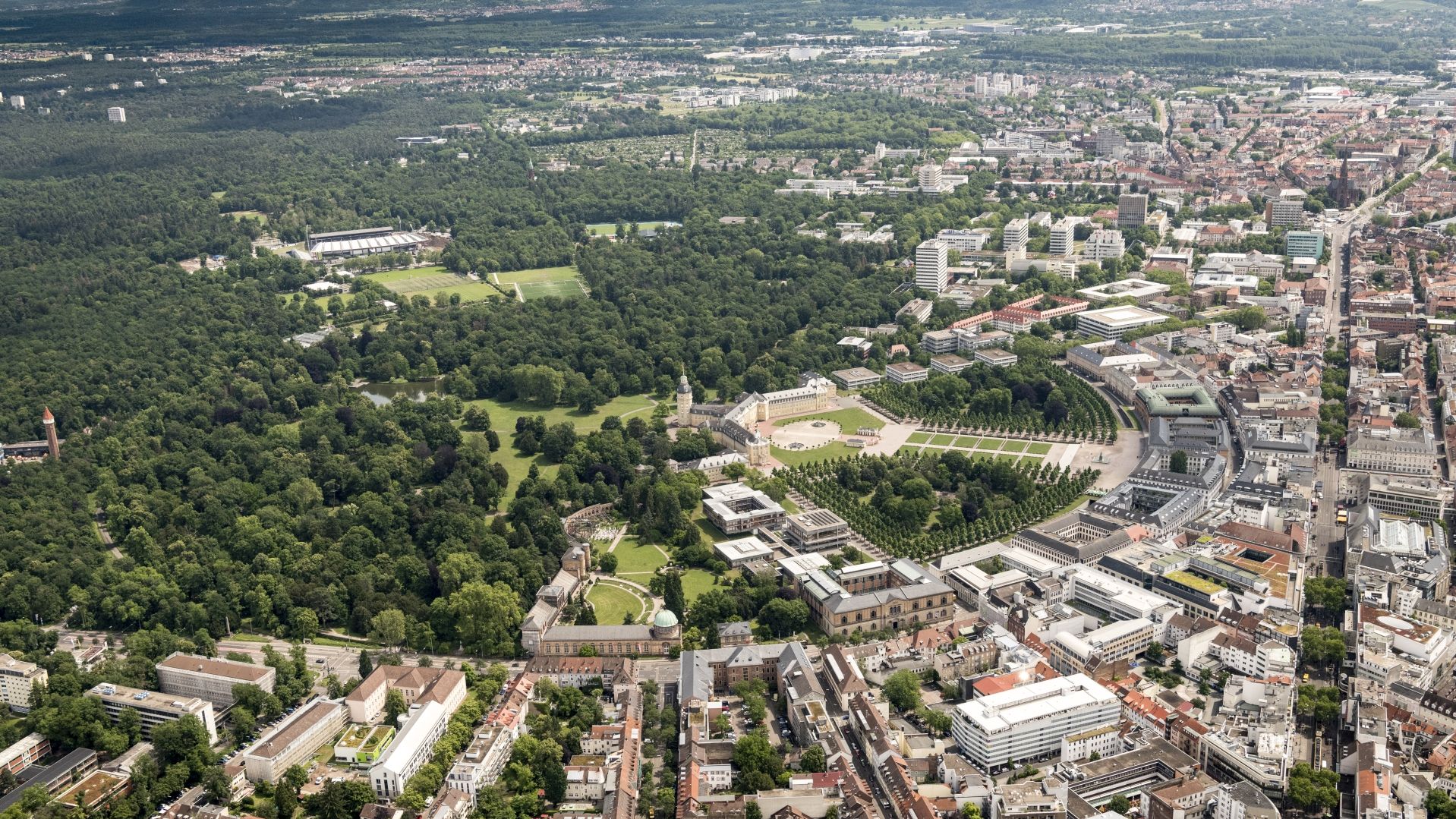
They cool and clean air, boost biodiversity, and support recreation: Trees in cities contribute in many ways to the well-being of the city people. In the URBORETUM innovation cluster, researchers from Karlsruhe Institute of Technology (KIT) are working with partners to find out what is needed to ensure that urban trees can provide their "services" even in times of increasingly extreme climatic conditions.
Healthy urban trees filter pollutants from the air we breathe, serve as habitats, and cool their surroundings through shade and evaporation. Moreover, tree sites act as buffers during heavy rainfall, prevent surface runoff and thus relieve the burden on the sewer system. Urban trees have also psychological effects on humans, such as effective stress reduction. "Trees in the city offer a whole bunch of positive services for the ecosystem that are becoming increasingly important in view of the advancing climate change," summarizes Dr. Somidh Saha, forest scientist at the Institute for Technology Assessment and Systems Analysis (ITAS) at KIT.
However, there is doubt whether urban trees will still be able to provide these services to the same extent in the future. Urban trees suffer from prolonged periods of drought, heat, soil pollution and compaction, invasive pests or the growing demand for space. While this applies especially to older trees, newly planted ones are increasingly affected, too. On the other hand, the knowledge on important factors for the growth of urban trees is still limited. "The better we understand urban trees, the better we can ensure that they remain healthy and grow well in the future," says Saha.
Sensors for 240 Trees in Karlsruhe
This is where the URBORETUM innovation cluster comes into play: Over the next three years, and possibly during a possible two-year implementation phase afterward, the researchers will try to decipher the processes that have an effect on ecosystem services, growth and vitality of urban trees. It is crucial to know how prolonged periods of drought affect the health of urban and peri-urban forests. Using wood samples, the experts involved are investigating, for example, which effects stress by droughts and other extreme climate events have had on the growth and structure of wood in the past. An extensive survey of current data is conducted to supplement the findings.
240 trees at various locations in Karlsruhe, such as parks or streets, are being provided with sensors in order to enable the researchers to track how current environmental changes affect the growth of trees over a longer period. To get a broader data basis, additional measurements are carried out on trees with similar growth conditions in Freiburg, Mannheim, and Heidelberg. Computer models with digital twins of urban trees add to this field research.
Partners from Science and Practice
Numerous partners from science and practice, which take on complementary tasks, are involved in the project led by ITAS. While ITAS focuses on the question of which specific conditions influence the growth of trees in cities, the Institute of Geography and Geoecology at KIT identifies mechanisms that lead to premature tree death. The team at the University of Freiburg is working on basic principles to support city administrations in selecting appropriate tree species in the future and optimizing their management.
The Central Institute of Mental Health in Mannheim, in turn, investigates to what extent people's well-being is influenced by the presence or absence of trees in the city. For this purpose, the researchers combine imaging techniques, a smartphone app, geo-localization, and psychological evaluations. Two other companies are involved as well: Rinntech-Metriwerk GmbH & Co. KG develops a largely automated process that local authorities can use to assess the health of trees. greeHill Deutschland GmbH scans around 45,000 trees in the participating cities and makes them available as digital twins. Finally, the link between theory and practice is provided by the horticultural department of the City of Karlsruhe, which facilitates the research on-site and integrates the project results into the city's urban planning processes.
Results Are Meant to Improve Management Practice
"We are positive that our results can help to significantly enhance the current management practices of urban forests despite increasing challenges and limited resources - especially about the selection of new tree species, the inventorying and regular monitoring of the tree population, and tree maintenance," says project leader Saha. Furthermore, he is convinced that a better understanding of the interrelationships between trees and the well-being of the people can contribute to raise the awareness for the positive effects of urban trees and help to make better use of these effects.
About URBORETUM
URBORETUM is funded by the Federal Ministry of Education and Research as part of the REGULUS funding program. The URBORETUM research team is one of ten innovation groups all over Germany that research on developing solutions for a sustainable and climate-friendly forestry and timber industry.
More information on the KIT Humans and Technology Center
Being "The Research University in the Helmholtz Association", KIT creates and imparts knowledge for the society and the environment. It is the objective to make significant contributions to the global challenges in the fields of energy, mobility, and information. For this, about 10,000 employees cooperate in a broad range of disciplines in natural sciences, engineering sciences, economics, and the humanities and social sciences. KIT prepares its 22,800 students for responsible tasks in society, industry, and science by offering research-based study programs. Innovation efforts at KIT build a bridge between important scientific findings and their application for the benefit of society, economic prosperity, and the preservation of our natural basis of life. KIT is one of the German universities of excellence.






